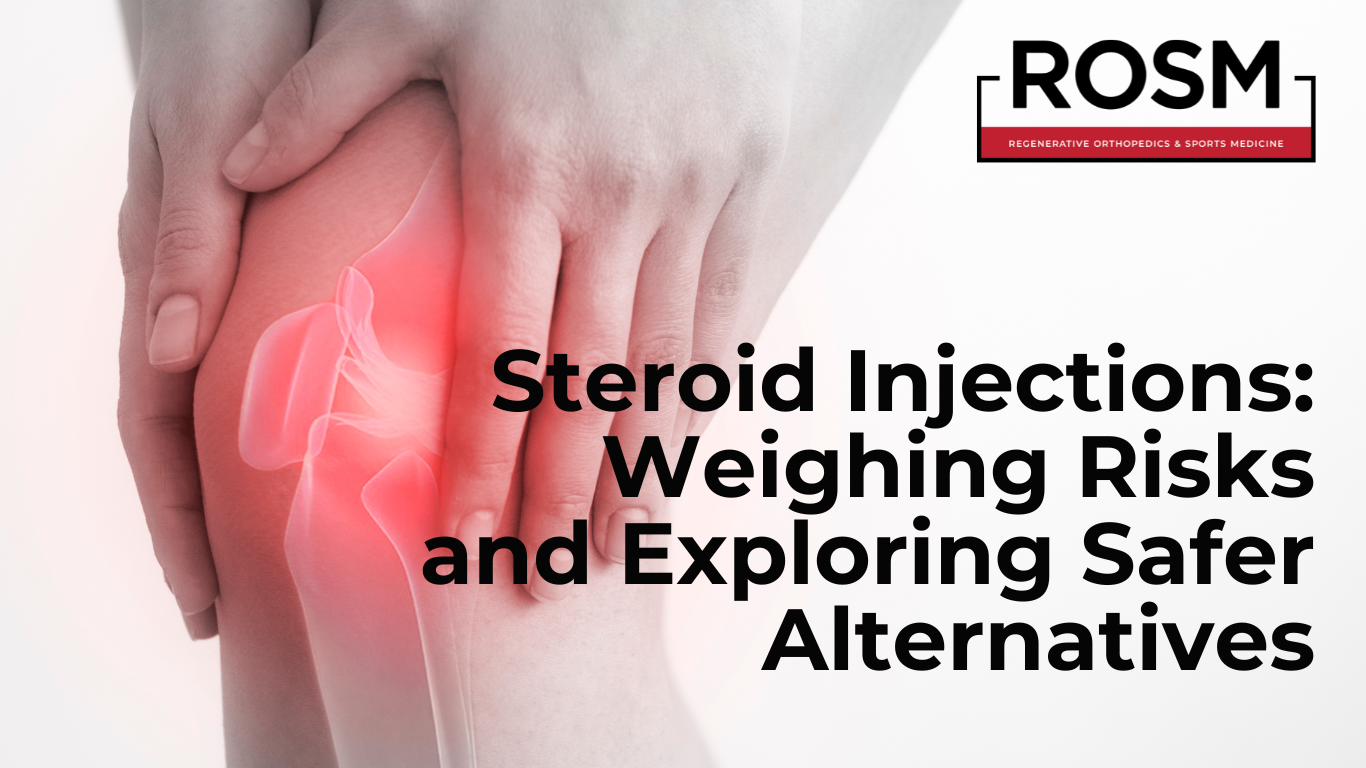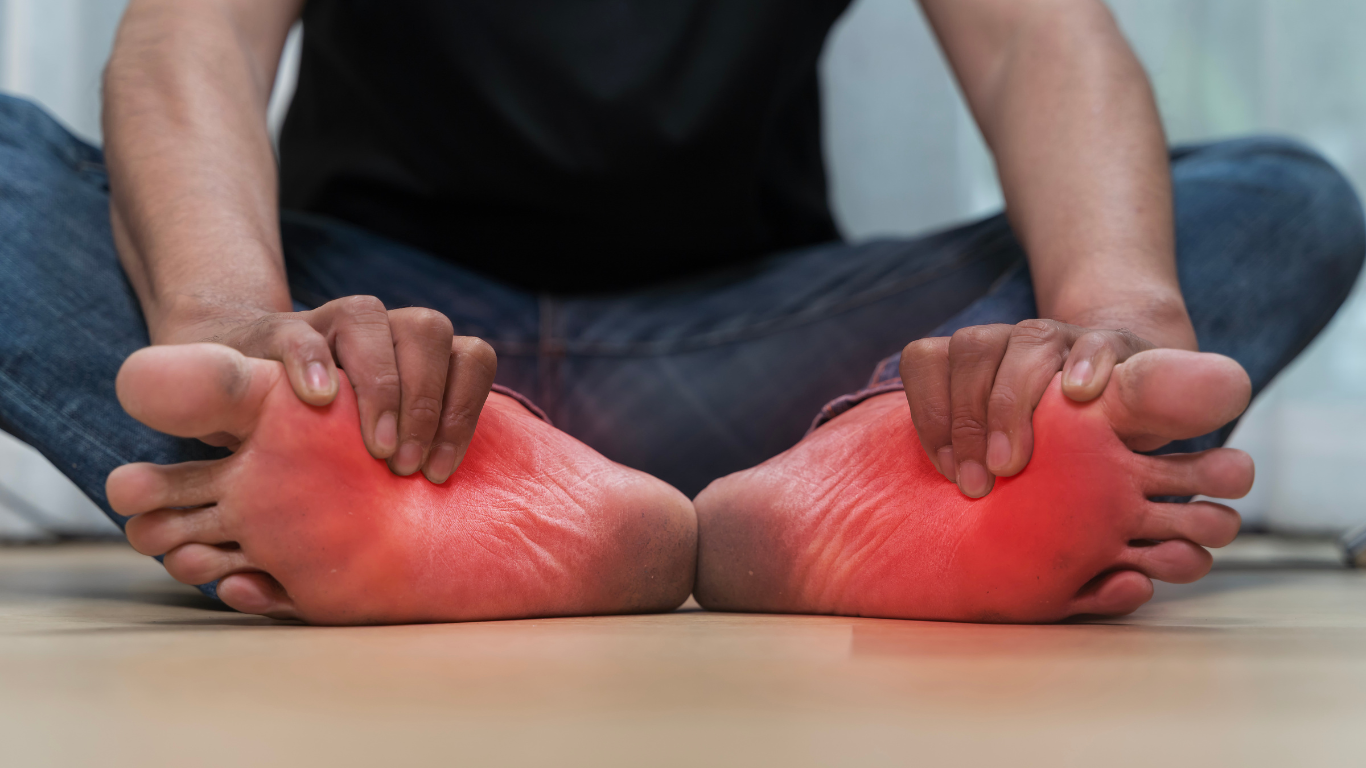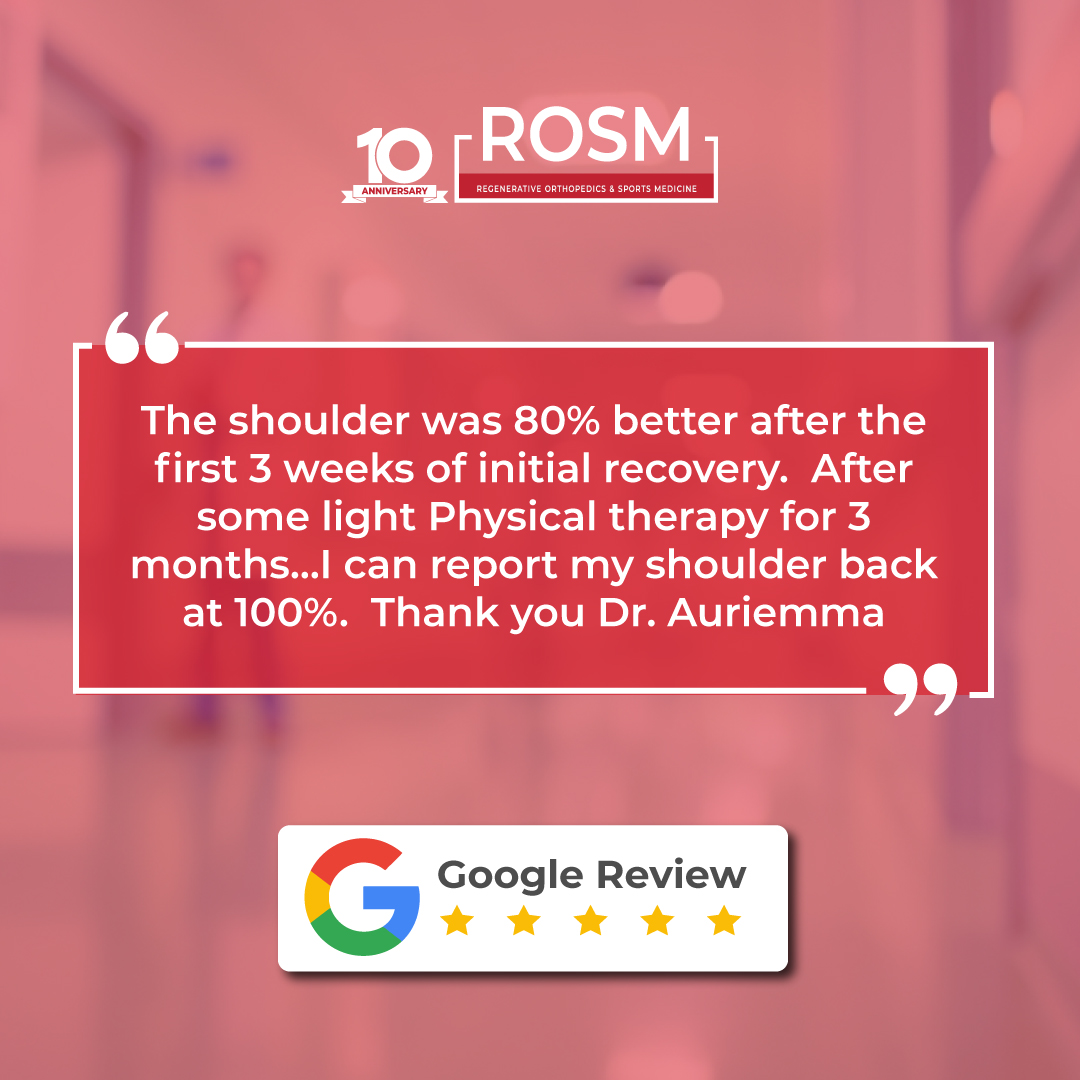By Dr. John L. Ferrell III, M.D.(*)
A patient once told me, “My knee injection worked for a few days, but now the pain feels even worse.” That story is not unusual. Corticosteroid injections have long been a go-to treatment for musculoskeletal pain. They can provide quick relief, but growing evidence shows that the short-term benefit may come at a long-term cost. As physicians, we now face a dilemma: should we continue using steroids as the first line of care, or shift more decisively toward regenerative treatments that help tissues heal rather than mask symptoms?
What Steroid Injections Do — and Why They Are Common
Corticosteroid injections are designed to reduce inflammation. By calming down the body’s inflammatory response, they can temporarily ease pain and swelling in conditions such as:
-
Tendinopathy
-
Bursitis
-
Osteoarthritis flare-ups
There is no question that steroids can help in the short term, especially when a patient is in significant pain and needs rapid relief. But they are not without consequences.
Local and Systemic Risks of Steroid Injections
A recent review from Kamel et al.(*) and other studies highlight both local and systemic complications of steroid injections that patients should understand before choosing this treatment.
Local Side Effects
-
Skin hypopigmentation, thinning, or atrophy near the injection site
-
Soft-tissue calcification
-
Tendon degeneration and even rupture, especially in high-risk areas such as the plantar fascia or rotator cuff (ScienceDirect)
-
Accelerated cartilage damage, worsening osteoarthritis (AJR)
Systemic Side Effects
-
Temporary adrenal suppression, where the body’s natural cortisol production is reduced
-
Hypertension and hyperglycemia, which is particularly concerning in patients with diabetes
-
Increased risk of osteoporosis over time
-
Higher risk of joint infection if surgery is performed soon after an injection
These risks can occur after just one injection but are more concerning with repeated use.
The Problem With Repeated Steroid Use
While a single steroid injection may be useful for short-term pain control, repeated injections raise concerns. Evidence shows that multiple injections can:
-
Accelerate the progression of osteoarthritis
-
Weaken tendons and ligaments, making ruptures more likely
-
Increase the risk of complications if surgery follows shortly after the injection
One of the most serious risks is adrenal suppression. When steroids enter the bloodstream, they can suppress cortisol production for weeks. In stressful situations such as infection or surgery, this can put patients at risk of adrenal insufficiency.
Why Regenerative Alternatives Like PRP Are Changing the Conversation
This is why many of us are turning to regenerative therapies such as Platelet-Rich Plasma (PRP). Unlike corticosteroids, PRP uses your own blood to promote healing. After your blood is processed to concentrate platelets, the injection delivers growth factors and signaling proteins that stimulate tissue repair rather than break it down.
Clinical research supports PRP’s value:
-
In rotator cuff injuries, PRP has been shown to produce better long-term functional outcomes than corticosteroids (Orthopedic Reviews).
-
In knee osteoarthritis, PRP injections have been found safer and more effective for pain reduction and functional improvement compared to steroids (ScienceDirect).
The biggest difference: PRP works with your body to regenerate tissue instead of only suppressing inflammation. Relief builds over weeks to months, but the results often last longer and support the health of the joint.

When Steroid Injections Still Have a Role
It is important to note that steroid injections are not always the “wrong” choice. They can still be appropriate in certain circumstances:
-
For patients experiencing severe inflammation who need rapid relief
-
For short-term control of bursitis or acute flare-ups
-
When used cautiously and not repeated frequently
The key is informed decision-making. Patients should understand both the benefits and risks and weigh them against regenerative alternatives.
What to Ask Your Doctor Before Choosing an Injection
If you are considering an injection for pain relief, here are some important questions to ask:
-
How often is it safe for me to receive steroid injections?
-
Do steroid injections increase the risk of tendon or cartilage damage in my condition?
-
What regenerative options, such as PRP or microfragmented adipose tissue, might help me heal instead of just masking pain?
-
What outcomes can I expect from PRP compared to steroids?
What I See in Practice
In my own practice at ROSM clinics around the DMV area, I often see patients who initially benefited from steroids but later developed tendon weakening, cartilage damage, or instability after repeated injections. On the other hand, when those same patients tried regenerative therapies like PRP, many experienced not only pain relief but also improvements in function and tissue quality over time.
The Safer Path Forward
Steroid injections can provide quick relief, but they also carry real risks. For many patients, especially those with recurring pain or degenerative conditions, regenerative medicine offers a safer and more sustainable approach.
At ROSM, we are committed to helping you heal on your terms, using therapies that support long-term recovery instead of short-term masking of symptoms.
If you are living with joint or tendon pain, schedule a consultation today to explore whether PRP or other regenerative treatments may be the right next step for you.
FAQs
Q1. Are steroid injections safe long term?
Steroid injections may provide short-term pain relief, but repeated use has been linked to tendon weakening, cartilage damage, and even accelerated arthritis. For most patients, long-term reliance is not recommended.
Q2. How many steroid injections can I safely receive?
Most doctors recommend limiting steroid injections to no more than three to four times per year in the same joint. More frequent use increases the risk of tissue damage.
Q3. Is PRP better than cortisone?
Research shows PRP offers longer-lasting improvement for conditions like knee osteoarthritis and rotator cuff injuries. Unlike cortisone, which suppresses inflammation, PRP helps tissues heal.
Q4. How long does it take to feel relief with PRP?
While cortisone works quickly, PRP works gradually. Patients usually begin noticing improvement within 4 to 8 weeks, with benefits continuing to build over several months.
Q5. What conditions can PRP help treat?
PRP is commonly used for knee arthritis, rotator cuff tears, tennis elbow, plantar fasciitis, and other tendon or joint injuries. Your doctor can help determine if you are a good candidate.




